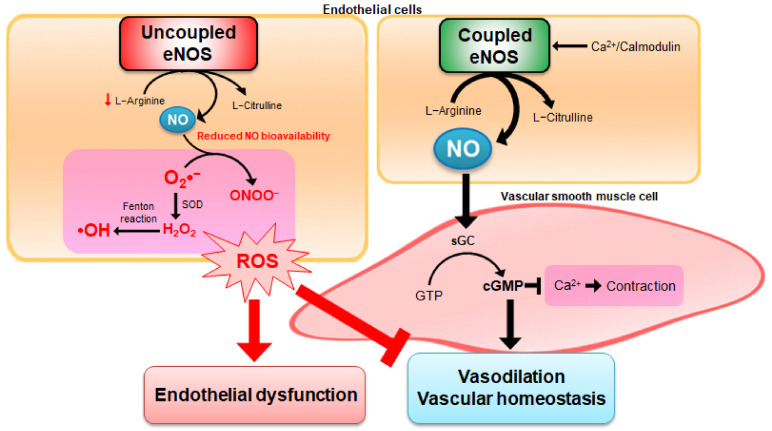Figure 4.
Endothelial dysfunction via modulation of eNOS uncoupling. Coupled eNOS utilizes L-arginine to produce NO and L-citrulline predominantly rather than ROS. NO plays an important role in the vasodilation of vascular smooth muscle cells (VSMCs) to maintain vascular homeostasis through the cyclic guanosine monophosphate (cGMP)-dependent signaling cascade. In pathological situations, eNOS becomes dysfunctional and produces superoxide anions (O2•−) rather than NO. Superoxide anions are dismutated to form hydrogen peroxide (H2O2) by superoxide dismutase (SOD), and are used to generate hydroxyl radicals (•OH) by the interaction with ferrous iron and H2O2 through Fenton reaction. Furthermore, the interaction between NO and superoxide anions leads to the formation of peroxynitrite (ONOO−), resulting in ROS production with subsequent endothelial dysfunction. Endothelial dysfunction is characterized by decreasing bioavailability of eNOS-derived NO, which results in impaired endothelium-dependent vasodilation.

